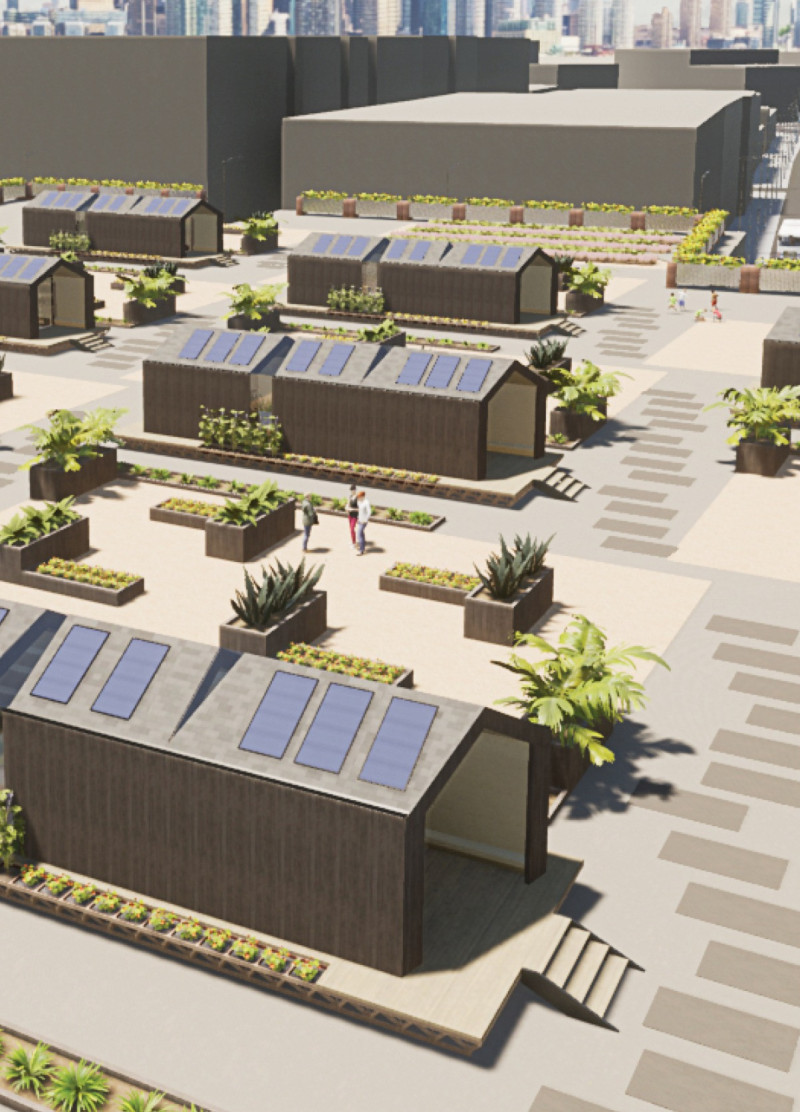5 key facts about this project
The project incorporates modular design principles, allowing for flexibility in spatial organization. Much of the layout centers around significant communal areas that facilitate interaction and a sense of community among residents. The arrangement of living units is carefully planned, ensuring optimized space usage while promoting inclusivity.
Innovative Materiality and Sustainable Features
The Top Top House is distinguished by its commitment to sustainability through the use of locally sourced and recycled materials. Key materials utilized in this project include recycled rubber shingles for roofing and wooden batons for structural support. Plywood sheathing reinforces walls, while cotton (denim) insulation provides thermal efficiency derived from recycled sources.
Additionally, the project effectively incorporates a range of ecological systems. These include rainwater harvesting, waste management solutions such as biodigesters, and an ecological toilet that minimizes water usage. This strategic integration of sustainable technologies satisfies both functional requirements and environmental considerations.
Community-Centric Architectural Solutions
A defining aspect of the Top Top House is its emphasis on communal living. The design encourages social interactions and supports shared activities through urban gardens and common spaces. This approach not only enhances the quality of life for residents but also promotes collaboration among individuals, fostering a vibrant community atmosphere.
The adaptable modular design allows for varied configurations tailored to the specific needs of residents, making it suitable for a diverse population. By employing horizontal and vertical wooden bracing as part of the structural systems, the architectural design ensures stability while maintaining aesthetic appeal.
For those interested in gaining deeper insights into the architectural plans, sections, and overall design of Top Top House, it is recommended to explore the project presentation further. By reviewing these elements, readers can appreciate the architectural ideas that underpin this meaningful contribution to urban housing solutions.























